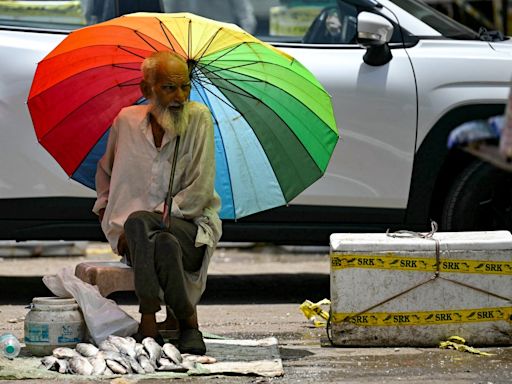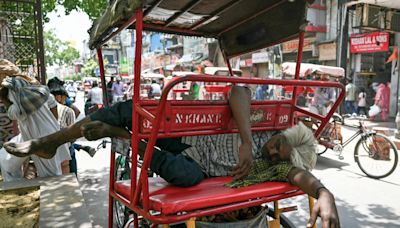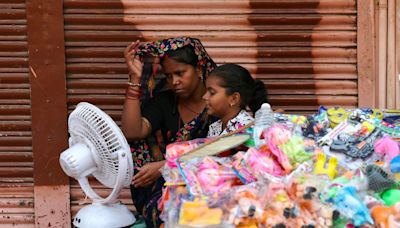Search results
› Country Location › Continent
Culture. Cityscape. Transport. Education. Sports. International relations and organisations. See also. Notes. References. Bibliography. External links. New Delhi. Coordinates: 28°36′50″N. New Delhi ( / ˈnjuː ˈdɛ.li / ⓘ, [6] Hindi: [ˈnəiː ˈdɪlːiː], ISO: Naī Dillī ), is the capital of India and a part of the National Capital Territory of Delhi (NCT).
Delhi. Coordinates: 28°36′36″N. Delhi, [a] officially the National Capital Territory ( NCT) of Delhi, is a city and a union territory of India containing New Delhi, the capital of India.
New Delhi is located in the northern part of India, in the National Capital Territory of Delhi. It is the capital city of India and is situated within the larger metropolitan area of Delhi. Nestled along the Yamuna River, New Delhi is known for its iconic landmarks, including the historic Red Fort, Humayun’s Tomb, and the modern Lotus Temple.
- Etymology
- History
- Geography
- Civic Administration
- Government and Politics
- Infrastructure
- Economy
- Transportation
- Demographics
- Culture
The etymology of "Delhi" is uncertain. The most common view is that the name originates from Raja Dhilu, a king who reigned in the first century B.C.E., and that the various names by which it has been known (Dilhika, Delhi, Dehli, Dilli, and Dhilli) have been corruptions of the king’s name. One of the most ancient names for Delhi is Dilhaka. Some h...
Human habitation was probably present in and around Delhi during the second millennium B.C.E. and before, as evidenced by archaeological relics. The city is believed to be the site of Indraprastha, (built c. 1400 B.C.E.) the legendary capital of the Pandavas in the Indian epic Mahabharata. Settlements grew from the time of the Mauryan Empire (c. 30...
The National Capital Territory of Delhi is spread over an area of 573 mi² (1,483 km²), of which 302 mi² (783 km²) is designated rural, and 270 mi² (700 km²) urban. Delhi has a maximum length of 32 mi (48.48 km) and the maximum width of 30 mi (48 km). Delhi is located at 28°61′N 77°23′E, and lies in northern India. It borders the Indian state of Utt...
The Delhi metropolitan area lies within the National Capital Territory of Delhi (NCT). The NCT has three local municipal corporations: Municipal Corporation of Delhi (MCD), New Delhi Municipal Council (NDMC) and Delhi Cantonment Board. MCD is one of the largest municipal corporations in the world providing civic amenities to an estimated 13.8 milli...
As a special Union Territory, the National Capital Territory of Delhi has its own Legislative Assembly, Lieutenant Governor, Council of Ministers and Chief Minister. The legislative assembly seats are filled by direct election from territorial constituencies in the NCT. However, the Union Government of India and the Government of National Capital T...
The previously mentioned influx of immigrants into Delhi has helped cause a number of seemingly unsolvable problems to the city’s infrastructure. Rapid development in the past 50 years has required all the ingenuity of city planners to provide sufficient clean water, sanitation, and power for the population.
With an estimated net State Domestic Product (SDP) of 83,085 crores (830.85 billion) Indian rupee (INR) (for the year 2004–05), Delhi is an important commercial center in South Asia. Delhi has a per capita income of 53,976 INR which is around 2.5 times of the national average. The tertiary sector contributes 70.95 percent of Delhi's gross SDP follo...
Public transport in Delhi is provided by buses, auto rickshaws, a rapid transit system, taxis and suburban railways. Buses are the most popular means of transport catering to about 60 percent of the total demand. The state-owned Delhi Transport Corporation (DTC) is a major bus service provider for the city. Private vehicles account for 30 percent o...
Many ethnic groups and cultures are represented in Delhi, making it a cosmopolitan city. A seat of political power and a center of commerce, the city attracts workers—both blue collar and white collar—from all parts of India, further enhancing its diverse character. A diplomatic hub, represented by embassies of 160 countries, Delhi has a large expa...
Delhi's culture is evident in its extremely wide variety of religions, ethnicities, languages, and practices throughout its lengthy history. Having experienced the rule by Mauyuran, Sultan, Mughal, British, and democratic systems throughout the years, specific cultural influences in Delhi are often too blurred to identify conclusively. In addition,...
New Delhi is located in the northern part of India in the National Capital Territory of Delhi (NCT). The NCT isn’t to be confused with the National Capital Region, which is even larger and contains the NCT as well as surrounding districts. Political Map of India.
New Delhi (Hindi: नई दिल्ली Naī Dillī), the central part of the National Capital Territory of Delhi, is the British-built capital of India. Characterised by its wide boulevards, many roundabouts (traffic circles), colonial mansions, and government buildings dotted with monuments from various parts of India's history, this is ...







